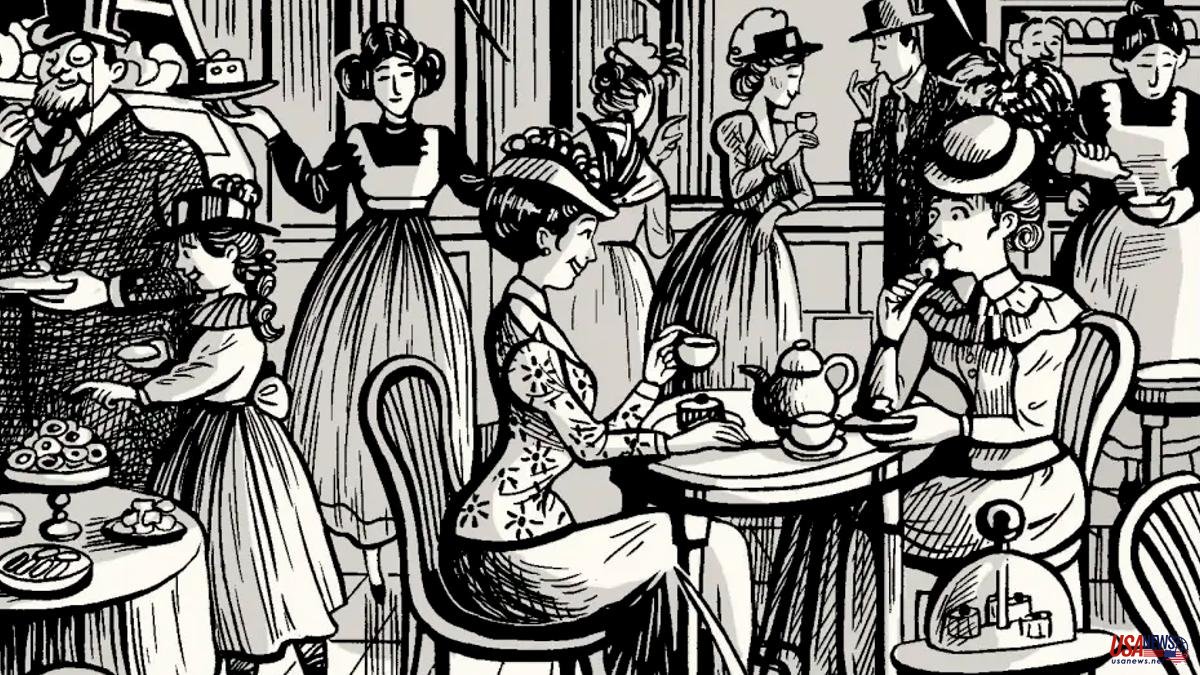This is a double story that is embodied in a single person. On the one hand, there is the story about the pioneers of cinema, some more attracted by the scientific part of the invention, others by the commercial or leisure possibilities that this new technology could have. And then there is a woman's struggle to make her way professionally in a male-dominated society. The figure of Alice Guy allows these two stories to be told through her life. She was the first film director in history, and despite this, her name hardly appears in the film history books, which confirms that her fight for the recognition of her work continues well today. .
It is told by the illustrator Catel Muller –who signs her works as Catel– and the screenwriter José-Louis Bocquet in a book soberly titled Alice Guy and published in Catalan by Editorial Finestres with a translation by Marta Marfany. It is an extensive biography in graphic novel format that contributes to the vindication of this creative woman, businesswoman and pioneer of cinema at a time when this art was taking her first steps.
In 1895, the brothers Auguste and Louis Lumière screened in Paris what is considered to be the first film in history, The Exit of the Factory Workers. A year later, Alice Guy made her first film, a fantasy about the birth of babies that she titled La Fée aux Choux (The Cabbage Fairy). It was a success and at the same time the demonstration that this new art that was the cinema could tell completely invented stories with the aim of entertaining the audience. At that time, another pioneer named Georges Méliès, was also filming her first works.
Alice Guy created more than 500 films, the vast majority of which have been lost. For years, many of them were falsely attributed to other authors, in most cases his collaborators. She wrote and directed her own films and she even created a company, Solax, which settled in Fort Lee, in the United States, a city that was the mecca of cinema before the industry moved to Hollywood.
Through a sober drawing and a script that follows Guy's life linearly, from his birth in France in 1873 to his death in New Jersey in 1968, Catel and Bocquet sign a work that in its original French version has already sold over 35,000 copies.
This artistic tandem is a true specialist in documented graphic biographies of illustrious women, although not always sufficiently well remembered. They became known with Kiki de Montparnasse, evoking the life of the model that Man Ray immortalized in some of his most iconic photographs, and then continued their collaboration with Olympe de Gouges and later with Joséphine Baker. In all cases, they deal with the life of the biographies in a fictional way but with historical rigor and a special ability to capture the ideas and commitment of women whose ideals were ahead of their time.
Characters such as the aforementioned Lumière and Méliès parade through the book, but also Gustave Eiffel - who invested in film companies - or Charlie Chaplin. The creative and technical problems of that pioneering cinema and made with more enthusiasm than knowledge are evoked: the problems with light, with the conservation of the films or with the synchronization of the audio in the first and rudimentary sound films. The comic also allows us to discover how the consumption of cinema was changing and to see that, in a short time, the films went from being mere short-lived anecdotes (“one reel”) to much more ambitious productions in terms of theme, setting and duration ( “five-reel” films). Alice Guy is the chronicle of an art that was in the process of finding itself and a vindication of a forgotten pioneer of cinema.













